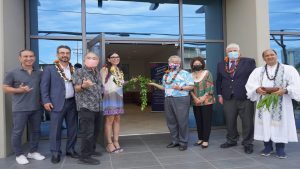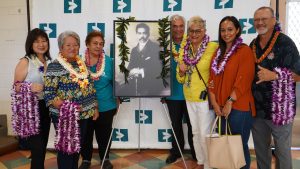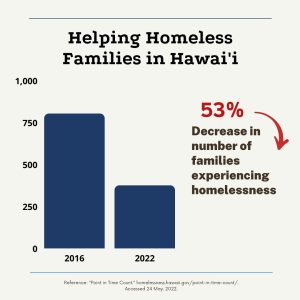Surpassing the goal to build more affordable housing
Posted on Nov 8, 2022 in Main
“Governor Ige’s leadership opened the lines of communication between affordable housing developers and various state agencies.” — EAH Housing president Kevin Carney
The bottom line: With streamlined policies, increased funding and improved financing tools, the Ige administration and housing partners have built more than 15,000 housing units over the past eight years — some 9,400 of which are affordable — with more units in the pipeline. The state also is making a historic $600 million investment for Hawaiian Home Lands beneficiaries and has reduced family homelessness by 53%.
When Governor Ige took office, the state had no coordinated plan for encouraging the development of new housing units. Statewide production had stagnated due to burdensome government processes and lack of adequate legislative appropriations for housing projects. The governor quickly made affordable housing one of his top priorities and exceeded the minimum production target of 10,000 new units he set by 2020.He took the advice of public and private sector stakeholders and secured large capital infusions into the state’s affordable housing funds from the legislature to spur future projects.
A new bar set for providing more affordable housing for Hawai‘i Governor Ige recently signed legislation to deposit $300 million into the Rental Housing Revolving Fund (RHRF). This brings the total to $783 million in RHRF legislative appropriations from 2015 to 2022, and $147 million in Dwelling Unit Revolving Fund appropriations for the same period. Hawai‘i Housing Finance and Development Corporation (HHFDC) director Denise Iseri-Matsubara said what is special about the new law is that it targets “the missing middle” — those whose income falls in the 60 to 100% AMI of about $78,000 to $130,000 a year. “These are the food service workers, teachers, and nurses in our community,” she said.
Historic funding to reduce Hawaiian Homes wait list – The governor also signed into law what has been called “the most consequential allocation of funding for the Hawaiian Homes Commission in 100 years.” The historic $600 million in funding continues the Ige administration’s push to reduce the waitlist for beneficiaries. The governor also signed into law a bill that provides $328 million as part of the Kalima case settlement.
Breaking the cycle of homelessness – Even with the pandemic, the state and counties have been able to significantly reduce homelessness — especially among families with minor children. Between 2016 and 2022, statewide Point in Time count data shows a decrease of 53% from 805 families (2016) to 376 families (2022) for all families experiencing homelessness. Service providers and homeless coordinators have deployed a range of “housing first” solutions, including a successful ‘Ohana Zones initiative for 20 projects statewide.
Read more in the November/December Capitol Connection newsletter.


